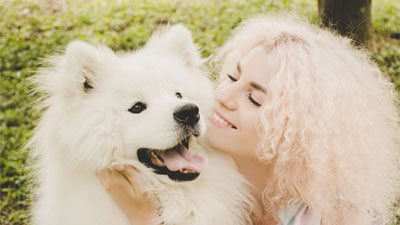- Size
- Smallest
- Small
- Small to Medium
- Medium
- Large
- Giant
- Characteristics
- Smartest
- Hypoallergenic
- Fluffy
- Best Guard
- Best Family
- Best for Kids
- Low Shedding
- Healthiest
- Police Dogs
- Most Calm
- Quietest
- Color
- White
- Black
- Grey
- Brown
- Blue
- Red
- Coat
- Hairless
- Short
- Long
- Origin
- Japan
- China
- Australia
- Germany
- Italy
- United States
- France
- Group
- Hound
- Terrier
- Herding
- Toy
- Working
- Sporting
The 6 Common Motivations Behind Dog Whining

While dogs predominantly rely on body language to communicate, their vocal expressions, including barking, howling, growling, and whining, play a crucial role in conveying a spectrum of emotions. The high-pitched sound of whines can vary in duration and intensity, offering valuable insights into a dog's state of mind.
In this article, we will delve into the world of canine communication and explore the various reasons behind a dog's whining, helping you to better understand your furry companion's needs and emotions.
Reasons Dogs Whine:
1. Pain or Discomfort
Dogs may whine when experiencing pain or discomfort, either due to an acute injury or chronic conditions. Observing whining during movements, attempts to lie down, or weight-bearing activities may indicate physical distress. Identifying the source of pain is crucial, and consulting with a veterinarian is recommended to address potential health issues.
2. Anxiety, Fear, or Stress
Whining can be a manifestation of anxiety, fear, or stress in dogs. Puppies, especially, may whine when placed in a new environment after leaving their litter. Additionally, separation anxiety or noise aversion, such as fear of fireworks, can trigger whining. Recognizing these stressors and providing reassurance helps create a secure environment for the dog.
3. Alerting to Something
Dogs may use whining to alert their owners to stimuli like sounds, smells, or sights they find noteworthy. This could include wildlife near the home, passing animals, or any perceived situation the dog deems important. Acknowledging their alert and investigating the source fosters a sense of partnership between the dog and its owner.
4. Excitement and High Arousal
Whining can result from heightened excitement or arousal levels in dogs. Greetings, anticipation of enjoyable activities, or encounters with beloved individuals may trigger this form of vocalization. Understanding the context of excitement-related whining allows pet owners to engage positively with their enthusiastic canine companions.
5. Expressing Wants or Frustration
Dogs may whine to communicate their desires or express frustration. In scenarios where a dog cannot reach a favorite toy or faces an obstacle, whining serves as a signal for assistance. While this can be beneficial, it's crucial to differentiate between genuine needs and learned demand behavior.
6. Boredom
Boredom is a common cause of whining and barking in dogs. Insufficient physical exercise or a lack of mental stimulation can lead to pent-up energy seeking an outlet. Recognizing signs of boredom, such as repetitive vocalization, helps pet owners address the dog's need for both physical and mental engagement.
How to Stop Your Dog from Whining:
While whining is a natural form of canine communication, managing nuisance whining involves addressing underlying needs and providing appropriate outlets for expression.
Increase Physical Exercise: Ensure your dog receives sufficient physical exercise daily. Beyond routine walks, engage them in activities like nose work games, hide and seek, or flirt pole play. Before implementing a new exercise routine, consult with a veterinarian to ensure your dog's health permits increased physical activity.
Enhance Mental Enrichment: Stimulate your dog's mind with daily enrichment activities. Introduce snuffle mats, organize "sniffari" outings for free exploration, and incorporate puzzle feeders during mealtimes. Training sessions, even short ones during commercial breaks, contribute to mental exercise. Rotate your dog's toys regularly to keep their environment engaging.
Conclusion
Dog whining, with its varied tones and purposes, forms an integral part of canine communication. By attentively listening and decoding the messages conveyed through whining, pet owners can strengthen their connection with their dogs. Recognizing the diverse motivations behind whining enables caregivers to respond empathetically and address the specific needs of their furry companions.
You May Also Like
 Dog BehaviorExploring 5 Common Reasons for Dog Growling Low
Dog BehaviorExploring 5 Common Reasons for Dog Growling Low Dog BehaviorDifferent Dog Growls and What They Mean
Dog BehaviorDifferent Dog Growls and What They Mean Dog BreedsThe 10 Dog Breeds with Prominent Hackles
Dog BreedsThe 10 Dog Breeds with Prominent Hackles Dog BehaviorWhat Does It Mean When A Dog's Hackles Stand Up?
Dog BehaviorWhat Does It Mean When A Dog's Hackles Stand Up? Dog Training TipsHere are the 7 Most Important Dog Commands
Dog Training TipsHere are the 7 Most Important Dog Commands Dog Training Tips5 Easy Steps: How to Teach a Dog to Smile
Dog Training Tips5 Easy Steps: How to Teach a Dog to Smile